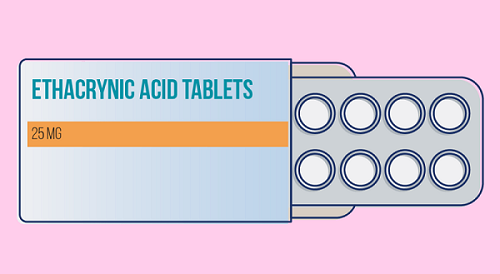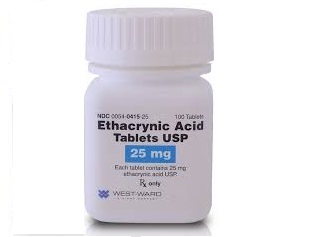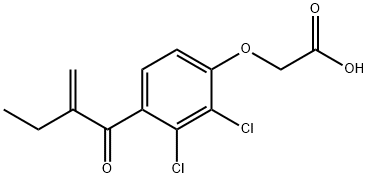Etacrynic acid - Drug Discovery, History, Mechanism of action etc.
Diuretics
In the 1950s, a novel approach to the problem of designing a non-toxic, potent diuretic was taken by a team of researchers from Sharp & Dohme, under the direction of Karl Beyer. Recent developments in renal physiology had convinced him that the moment was opportune for a fresh attempt to design a safe, effective diuretic. By then, it was known that reabsorption of water from the glomerular filtrate inside the lumen of the kidney tubules depended largely on the efflux of sodium ions across the tubule wall. It was believed that mercurial diuretics probably interfered with this movement of ions by inhibiting dehydrogenase enzymes inside the cells of the tubules. The ability of mercury compounds to bind to dehydrogenase enzymes (presumed to involve reaction with thiol groups) was readily demonstrable. This convinced the Sharp & Dohme scientists that it would be worth trying to design mercury-free inhibitors of dehydrogenases in order to avoid the toxic effects of mersalyl. It proved to be a daunting task that took many years of intensive research. The turning point was the realisation that both merbaphen and mersalyl possessed a phenoxyacetic acid moiety. When an unsaturated ketone was attached to the 4-position of the benzene ring, potent hydrogenase inhibitors were obtained. Analysis of the influence of additional substituents revealed that chlorine or methyl groups attached to the benzene ring further enhanced potency. Ultimately, ethacrynic acid emerged as a safe, orally active diuretic in 1962, five years after a separate group of Sharp & Dohme chemists had announced their discovery of the thiazide diuretics with similar properties.

Ethacrynic acid can trace its medicinal chemical ancestry all the way back to the introduction of pure mercury in the sixteenth century. Mercury can be considered as one of the oldest of all drug prototypes. The majority of drug prototypes come from the animal and vegetable kingdoms; mercury belongs to a minority that derive from the mineral kingdom.
Mechanism of action
The mechanism of action of ethacrynic acid appears to be more complex than the simple addition of sulfhydryl groups of the enzyme to the drug molecule. When the double bond of ethacrynic acid is reduced, the resultant compound is still active, although the diuretic activity is diminished. The sulfhydryl groups of the enzyme would not be expected to add to the drug molecule in the absence of the α,β-unsaturated ketone.

These compounds are potent high-ceiling diuretics that resemble ethacrynic acid in their mechanism of action. The ethyl ester group represents a pro-drug that can be easily hydrolyzed to the free carboxyl group. As in ethacrynic acid, a 2,3-dichloro substitution is necessary. In addition, a para-hydroxyl group and an unsubstituted aminomethyl group on the benzene ring are highly beneficial. The carbonyl group can be replaced with an ether or sulfide group. These compounds have no ability to add the sulfhydryl groups of the kidney enzymes. The complete mechanism of action of these compounds remains in doubt.


